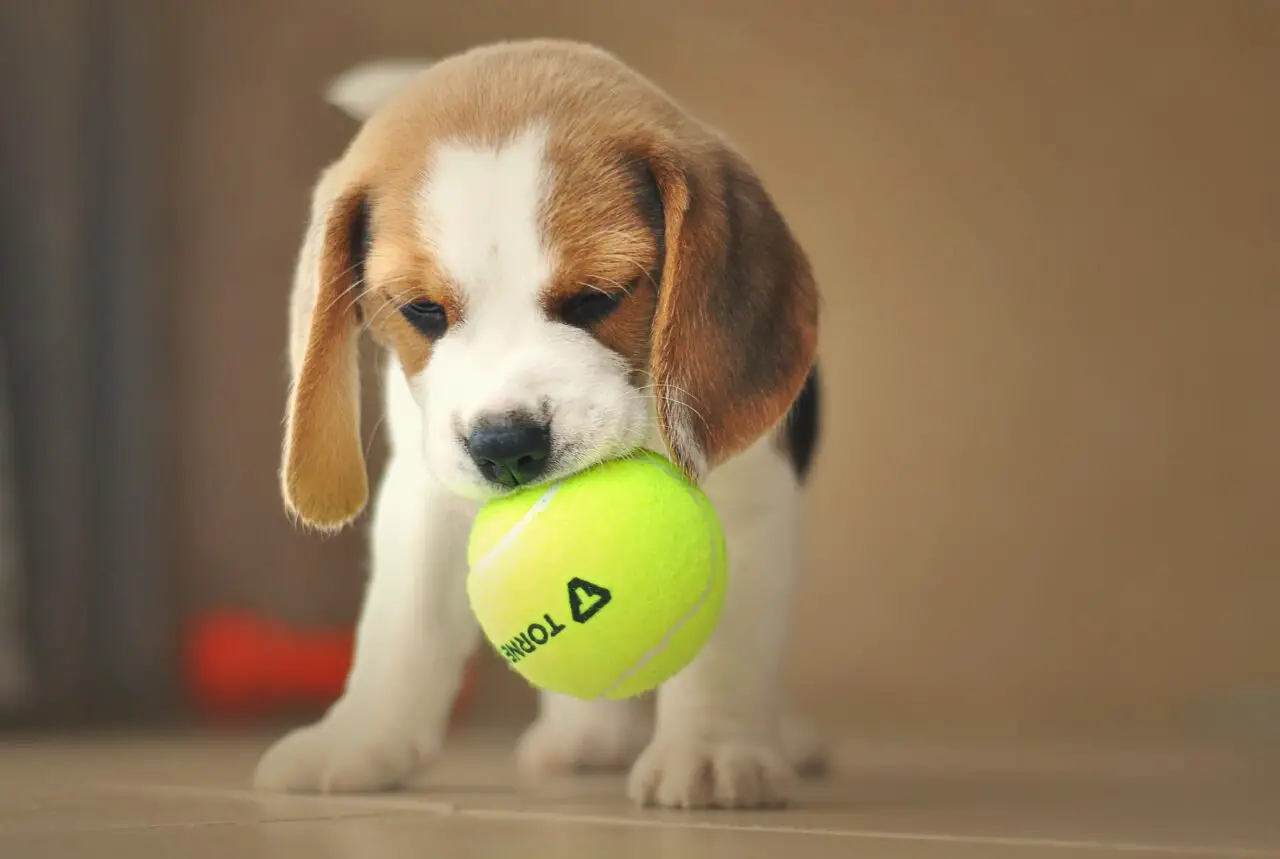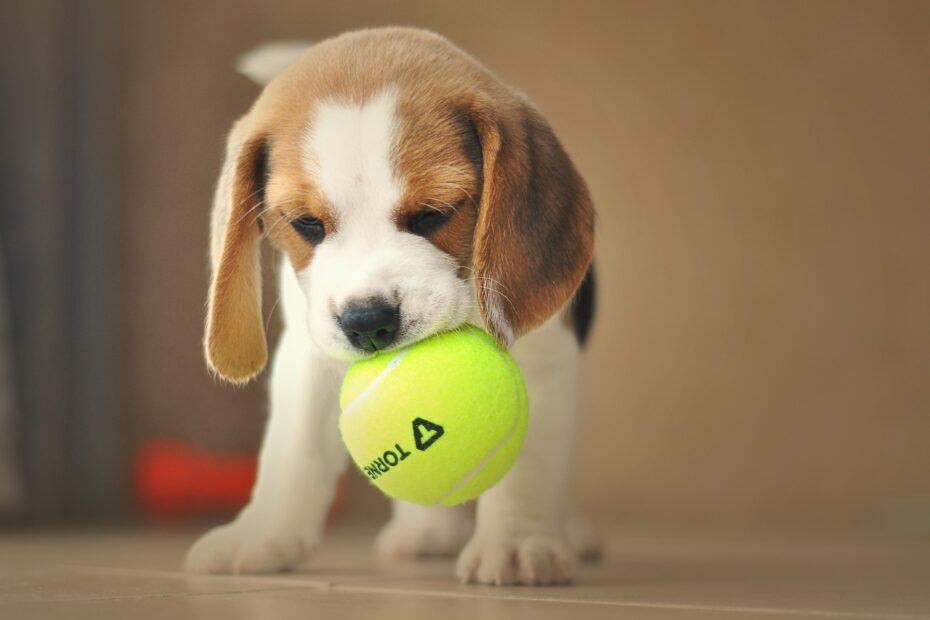These miniature scenthounds are just as jovial and playful as their larger Beagle counterparts, but they take up less space. However, the Pocket Beagles are still a hound at heart, so you’ll need patience and inventive training methods to get past the breed’s natural stubbornness.
Some of these purebred canines end up in the care of animal shelters and rescue organizations. Don’t lose sight of the importance of adopting! If bringing a dog into your home is a priority, you should avoid going shopping.
When it comes to their human family members, including other pets and even human children, Pocket Beagles can’t help but be doting. They are full of life and merriment, making wonderful playmates. Even the most well-mannered of Pocket Beagles has been known to get a little rowdy when they’re playing, so it’s important to keep an eye on the kids and teach them how to interact with a small dog safely.
This breed is suitable for people who live in apartments, so long as they take their dogs for long walks and run. These canines are known for their social graces. Just make sure they don’t have too much time to themselves at home alone.
You may also want to read about Belgian Malinois Puppies.
History of Pocket Beagles
The term “beagle” has an unclear background. The French word begueule, meaning “open throat,” or the Old English word beag, meaning “small,” have both been proposed as possible origins. Others propose that it was derived from the French word beugler, which means to bellow, or the German word begele, which means to scold.
In addition, the breed’s origins are murky because modern breeds didn’t emerge until the 19th century. In contrast, Beagle-like dogs are mentioned in Greek documents from around 400 B.C., and the Romans may have imported small rabbit-hunting hounds to England and bred them with the local hounds.
Some say that William the Conqueror brought the now-extinct Talbot hounds to England with him when the Normans invaded in 1066. It is believed that the Beagle and the Foxhound can trace their ancestry back to these dogs.
Pocket Beagles enjoyed rapid popularity in early modern England. Extremely small beagles, known as Glove Beagles, were popular during the reigns of Edward II (1307–1327 AD) and Henry VII (1485–1509 AD) because they could be held in a gloved hand. Also mentioned are animals known as Singing Beagles, so called for their distinctive “bugling” sounds.
Miniature 9-inch tall Pocket Beagles were kept in packs by Elizabeth I (1533-1603). Artists often portrayed these poodle-sized dogs with a snub nose and disproportionately short legs. Used for hunting initially, but soon abandoned due to slow speed.

The Beagle was replaced by the larger Foxhound as fox hunting gained popularity in England during the 1700s. Breed extinction was possible if farmers in England, Ireland, and Wales hadn’t kept packs to hunt rabbit and hare.
Midway through the nineteenth century, Reverend Phillip Honeywood of Essex, England, started a pack of Beagles. It is believed that these dogs are the progenitors of the modern Beagle. Reverend Honeywood was developed for his hunting prowess, not his good looks. Thomas Johnson, an Englishman, is credited with developing a line of Beagles that is both visually appealing and highly effective in the field.
Around the same time, dog lovers in the United States began importing Beagles from England in an effort to increase the variety and quality of their domesticated canine population. The average height of many of the English imports was bred to be between 15 and 17 inches so that they could be used for fox hunting. In the United States, breeders worked to create smaller rabbits for the sport of rabbit hunting.
The “Patch” Beagle strain, created by Willet Randall in New York around 1880, is of interest to these rabbit-hunters. The majority of the line is white, but there is a sizable spot of three different colors. Being able to run quickly contributed to their widespread popularity in the 1940s and 1950s. Patch beagles are a common name for beagles with a red and white coat or a lemon and white coat now.
In the same year that the first Beagle specialty club was established, the American Kennel Club was also established. That’s also the first year that the AKC accepted Beagles for registration.
Beagles compete in either the 13-inch class for those that are 13 inches or shorter, or the 15-inch class for those that are 13 inches or taller.
A breed of dog called the “Pocket Beagle” is not recognized by the American Kennel Club. The Beagle breed standard defines a “13-inch Beagle” as any Beagle that does not exceed 13 inches in height at the shoulder and typically weighs 15 to 18 pounds. The Pocket Beagle fits this description.
Care for Pocket Beagles
It is important to keep a pocket Beagle on a leash at all times when he is outside, as he is just as much of a scenthound as his larger relatives.
Because of his restless disposition, he should be microchipped and identified with identification tags in case he ever gets loose (which is not uncommon for Pocket Beagles).
An underground electronic fence is preferred by some homeowners, but it still can’t stop strays from entering your yard. In any case, if the scent is appealing enough, your Beagle will gladly endure the brief discomfort in order to continue its pursuit.
Obedience training is beneficial for Pocket Beagles, as it is for all dogs. Because Pocket Beagles will ignore harsh treatment in favor of ignoring the source of the problem, positive reinforcement methods are the most effective. Most Beagles would do just about anything for a tasty snack.
Beagle puppies and young dogs, especially, require extensive exercise and playtime as they enter their teenage years. They enjoy family outings on leash, but nothing beats a good sprint across the field to catch a rabbit (though this is not recommended unless your dog is well-trained to return to you).
If you want to take your dog jogging with you, wait until he or she is at least 18 months old to do so, as younger dogs may develop joint damage from the impact of repeated jogging.
At full maturity, a Beagle may become a slob who only gets up for meals and the occasional ear scratch. This is not a good idea because this breed is predisposed to being overweight.
Feeding Pocket Beagles
The amount of food that your adult dog needs is determined by factors such as his age, size, build, metabolism, and level of activity. Just like people, dogs have unique nutritional requirements. An obviously more active dog will require more than a less active dog.
What you shake into your dog’s bowl will depend on the quality of dog food you purchase; higher-quality dog food will go further toward nourishing your dog and will require less shaking.
The beagle is the thief of food. If given the opportunity, these dogs will daily raid your pantry and garbage cans and gorge themselves until they burst.
Instead of leaving food out for your Beagle all the time, feed him at set times throughout the day to keep his weight in check. Carefully track his calorie intake, and reduce his intake if he appears to be gaining weight.
When you look down at him, you should see that he has a waist, and his ribs should be visible to the touch but not the eye. If his abs are hiding under a layer of fat, he needs to trim down. Treats should be doled out sparingly. A small Beagle will be just as pleased with a biscuit-sized training treat.
Grooming Pocket Beagles
The Beagle breed standard allows for any hound coat color. Any variation or combination of the following colors is acceptable for a hound: white or cream, black, tan, lemon, red, brown, liver, blue, or gray.
Beagles typically come in a tricolor pattern consisting of tan at the head and around the saddle, black at the base of the tail, and white at the legs, chest, belly, and tip of the tail. An Irish spotting pattern of red and white on the head, neck, legs, and tail is the second most common coloration.
Freckles, mottling, ticking, and grizzling are all perfectly normal and can appear on any skin tone (a mixture of black or red and white hairs).
Regardless of their base color, a white tail tip helps hunters spot them in dense undergrowth. The coat of a Beagle is medium length, despite what you and I might think. It’s dense, smooth, and waterproof.
Unless they’ve found something particularly enticing to roll in, beagles tend to keep themselves clean. They can go without washing for a while. At least once a week, brush them with a medium-bristle brush or a hound glove (a rubber mitt with nubs on the palm area) to remove dead hair and promote new growth.
Beagles, like most dogs, shed, but their short hair makes the process less obvious. They shed more in the spring because their coats get thicker in the winter.
If you have a Beagle, you should know that his ears are prone to infections because of the poor air circulation that occurs in drop-eared dogs like him. The ears should be checked once every two weeks to make sure there is no infection or wax buildup. If your Beagle is constantly scratching at his ears or shaking his head, you should have his ears checked.
Once a week, you should check on your Beagle’s nails and trim them if they’ve grown.
